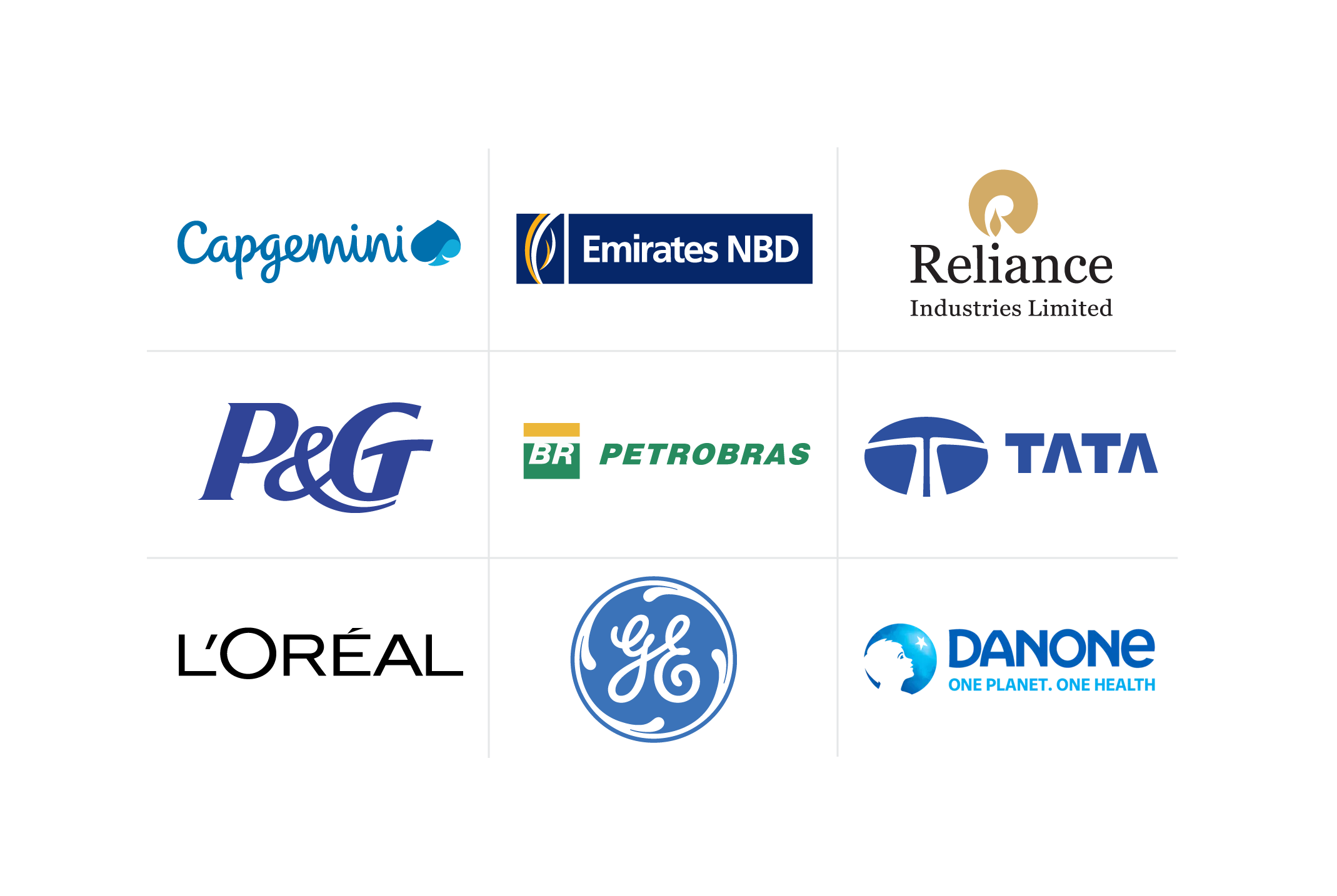Mastering Success: Your Guide to Skill-Based Learning
Discover how companies use skill-based learning to provide their employees with workforce development opportunities that fit strategically into the company's needs for skilled employees.
![[Featured Image] A business leader explains the company’s skill-based learning programs to a group of employees interested in workforce development.](https://d3njjcbhbojbot.cloudfront.net/api/utilities/v1/imageproxy/https://images.ctfassets.net/2pudprfttvy6/11Gk3AV4OqFS4gEY6pEJT8/902fe09e523c79dbb2902952250fa744/GettyImages-937775554.jpg?w=1500&h=680&q=60&fit=fill&f=faces&fm=jpg&fl=progressive&auto=format%2Ccompress&dpr=1&w=1000)
Skill-based learning is a way to approach workforce development and recruitment that can help you attract and retain more skilled staff and keep your workforce resilient to changes in the labor market and your industry.
Explore what skill-based learning programs mean for companies, the benefits of focusing on skills in workforce development and recruitment initiatives, and learn how to develop your learning program that meets your organization's needs.
Unveiling the essence of skill-based learning
Skill-based learning is opposed to other forms of learning, such as concept or knowledge-based learning, because the goal is to gain mastery or literacy of a specific skill using a “doing” approach rather than reading or studying concepts or topics. For example, a United States history course could take a concept-based approach and rely on lectures and readings to cover the material. A similar course called “Living in US History” might take a skills-based approach using projects and demonstrations to bring different aspects of historical life and relevant skills and facts to life.
Skill-based learning also refers to specific learning paths popular for professionals who want to expand their employability and job skills. If you want to improve your communication skills to perform more effectively at work, a skill-based approach, such as a certificate or certification program, could provide a focused approach with workplace simulations and projects.
According to a survey conducted by Deloitte, many companies are beginning to emphasize employee skills more than traditional qualifications such as formal degrees. Among the survey’s respondents, 89 percent of executives say that skills, rather than other qualification metrics, define how employees work and how the company values them [1]. Additionally, 90 percent of executives said they were experimenting with focusing on skills in different ways throughout their company [1].
Defining skill-based learning in a corporate context
Traditionally, the best way to determine whether or not a candidate had the skills you required for your job opening was to check that they had earned the appropriate degree. Due to challenges in the global talent market, employers are starting to implement a skill-based system for determining whether or not potential candidates will perform well in their roles. Doing so helps contribute to a more just workforce because it helps to avoid some of the traditional barriers to a four-year degree that some people face.
It also creates a more resilient and flexible workforce because people learn that the skills they gain in one line of work can translate into other areas, allowing people to switch careers and gain new experiences with more confidence. When you understand what skills each potential career requires, you can self-diagnose your skill gaps and determine what you need to learn to succeed in your current or future role.
The role of skill-based learning in organizational success
You can shift the focus to skill-based learning in two main ways: first, by implementing a skill-based learning program to retrain and provide continuing education opportunities to your staff. Second, you can refocus your recruitment efforts on skill-based qualifications. Skill-based learning offers various benefits for organizations, including:
Attract qualified candidates: Offering a skill-based learning program is one way to demonstrate that you respect your employees' professional development and care about their job goals, which can give your organization a reputation as an excellent workplace.
Attract a broader range of candidates: When you hire based on skills instead of more traditional means, such as requiring a four-year degree, you can reach a more diverse set of candidates with the skills you’re looking for but not the formal degree.
Improve employee confidence: Offering a skill-based learning program to your staff can help them feel more confident and knowledgeable in their day-to-day role.
Keeps high-skill employees highly skilled: All education has a shelf-life, particularly in industries where technology and other factors move rapidly. A skill-based learning program helps your employees stay sharp by focusing specifically on the skills they need to work on.

Designing effective skill-based learning programs
To design a skill-based learning program that impacts your team, you must first understand the skills your company needs to succeed. From there, it’s vital to measure the skills you currently have represented in your workforce, select tools to help your team improve their skills, and provide ample time to take advantage of your program. Let’s take a closer look at each step of this process.
1. Identify key skills for corporate success.
Having a robust understanding of the organization’s goals and the skills it relies on for success is vital to creating a program with the impact you desire. To do so, you must pinpoint the technical and industry-specific skills required for your company’s success and workplace skills like problem-solving, leadership, or emotional intelligence. It’s also valuable to examine the skills that could help your company succeed as it strives to meet future goals, such as learning related skills to help your employees think in new ways or learning about emerging technology that could transform your work.
2. Assess current skill levels and identify gaps.
Once you have a good idea of the skills you must cultivate within your organization, begin charting the current workforce skills. One way to accomplish this task is by using a competency map. This tool helps define the vitally essential skills in each business position to provide a big-picture view of how each employee fits into their role and the qualifications that you will look for in potential applicants.
3. Leverage technology for skill-based learning.
Once you understand what skills you need and what skills your employees have, the next step is to create a program and select educational resources to help the team develop their skills. You can offer in-person education opportunities like one-on-one mentoring or small group discussions. You can also leverage online training options to provide your employees with flexible training according to their schedules.
4. Give employees time to learn.
After you’ve invested the time and resources to offer a skill-based learning program, give employees time to take advantage of it. Consider incentivizing workplace learning or building camaraderie with friendly competitions. Provide follow-through after-learning programs to help your employees maximize engagement and the benefits of their continuing education.
Overcoming challenges in implementing skill-based learning
While skill-based learning presents many benefits for companies, you should also be mindful of the challenges often associated with this method of continuing education. Two common challenges include the following:
Addressing resistance to skill-based learning: Transitioning your professional development and recruitment programs to emphasize skill-based learning can directly challenge the “old ways” of doing things. You can build stakeholder trust by demonstrating the return on investment that skill-based learning efforts bring to the company and employees.
Lack of conceptual framework: The nature of skill-based learning focuses on the skills students learn, making it more difficult to extrapolate and use critical thinking to apply those skills in new areas because the learner may need a conceptual framework. One way to overcome this is to look for ways to tie skills together, encourage critical thinking, and explain why to do things a certain way instead of simply describing how to accomplish things.
Getting started with Coursera
Skill-based learning, with a practical, focused approach, can help staff acquire critical knowledge and skills faster and more effectively. Implementing a skill-based learning program for your staff is easier when you use Coursera to access turnkey programs that help your team develop the skills they need to be successful in the future.
With Coursera for Business, you can train teams across your organization in the skills that matter most in today’s digital economy. Your employees will gain access to content from 350+ leading universities and industry partners, where they can build real-world experience with innovative skills, tools, and technologies while earning globally recognized credentials. Our customizable, scalable learning solutions balance workplace and technical skills training in diverse formats, from video clips to guided projects and Professional Certificates. Accelerate your digital transformation and equip employees to drive growth with Coursera.
Article sources
Deloitte. “The Skills-Based Organization: A New Operating Model For Work and the Workforce, https://www2.deloitte.com/us/en/insights/topics/talent/organizational-skill-based-hiring.html.” Accessed June 13, 2025.
This content has been made available for informational purposes only. Learners are advised to conduct additional research to ensure that courses and other credentials pursued meet their personal, professional, and financial goals.

